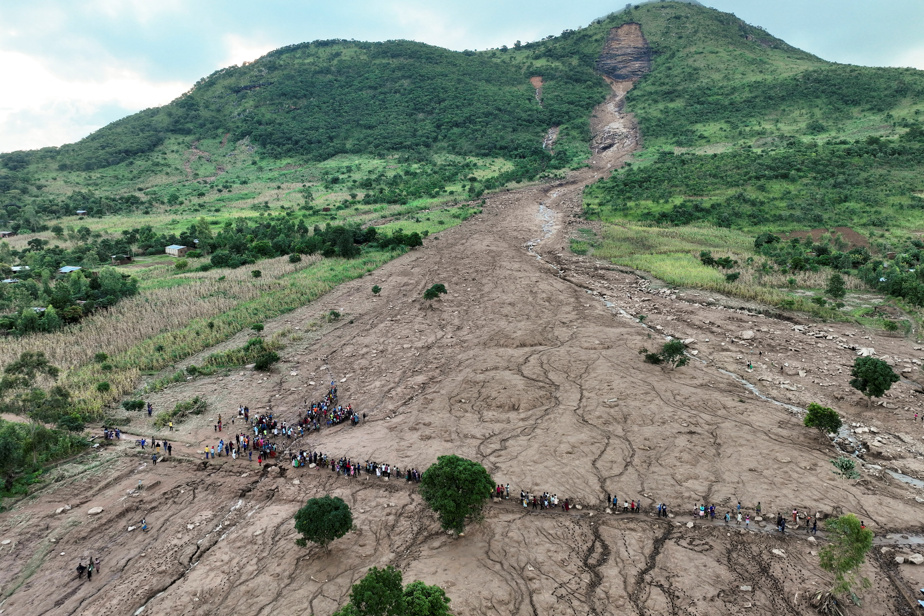(Blantyre) The Cyclone freddiewith exceptional longevity, killed more than 400 people in southern Africa, the vast majority of them in Malawi, where the toll worsened further on Thursday evening, the hope of finding survivors becoming increasingly slim.
freddie struck twice in a few weeks in the region, killing in its path 73 people in Mozambique, 17 in Madagascar and now 326 in Malawi, according to a latest report announced in the evening by the president of this poor country.
“The death toll from this disaster has risen from 225 to 326 dead, the number of displaced people has more than doubled” exceeding 183,000 in Malawi, said Lazarus Chakwera, traveling to Blantyre (south), economic capital and epicenter of bad weather. More than 300 emergency shelters have been opened.
Formed in early February off Australia, the cyclone on the way to being classified as the longest on record made an unprecedented crossing of more than 8000 km from east to west in the Indian Ocean. It made landfall for the first time on February 21 on the east coast of Madagascar, killing 7 people. The phenomenon, which has been raging for more than 35 days, then hit Mozambique, killing 10 people.
Then it turned back and hit Madagascar a second time in early March, killing 10 more people there. He also returned to Mozambique, where he still caused 63 deaths.
Buried in the mud
But it was in Malawi, a landlocked country that only experienced an increase in rainfall when the cyclone first passed, that freddie wreaked the most havoc upon his return. The torrential rains caused flooding and landslides.
A state of disaster and two weeks of national mourning have been declared, the police and the army deployed.
“The cyclone has destroyed property, homes, crops and infrastructure, including bridges, isolating communities in desperate need of assistance,” said President Chakwera, who reiterated his call for help. The Head of State had called the day before for international aid in the face of a “national tragedy”.
In neighboring Mozambique, President Filipe Nyusi, who visited the most affected province of Zambézia (center), bordering Malawi on Wednesday, also called for an “emergency” mobilization to “repair the destroyed infrastructure”.
On Thursday, in the township of Manje near Blantyre, neighbors and rescuers continued to search the ground in the hope of finding survivors. But the rescues end more and more often in a macabre collection of decomposing bodies.
Hundreds of dead are buried there, in the mud, residents assured AFP. The putrid smell and the air bubbles rising to the surface from the waterlogged ground leave little doubt.
warmer oceans
On a sticky path strewn with stones, dark-looking men whisper prayers as they lead the way for a team of five soldiers engaged in search operations. In front of a house in poor condition, they pull a body, a man, from the ground. His face, still legible, retained an expression of anguish.
“I hope they find other bodies so they can be buried and rest in peace,” said Rose Phiri, an elderly woman from the area.
In the midst of the desolation, miracles sometimes happen: the day before, the emergency services saved Promise, 13 years old. She had been trapped in a collapsed house for three days.
freddie began to dissipate, according to Randall Cerveny, rapporteur at the World Meteorological Organization (WMO), who described to AFP an “incredibly long” phenomenon.
According to specialists, the warming of the oceans contributes to the intensification of cyclones. And ” freddie intensified rapidly seven times in its lifetime,” said Roxy Mathew Koll, a climatologist at the Indian Institute of Tropical Meteorology.
Tropical storms and cyclones appear several times a year in the southwest Indian Ocean. The latest report from the Intergovernmental Panel on Climate Change (IPCC) predicts an increase in the frequency of powerful tropical cyclones.
